
Kerman Province is renowned as a historical hotspot in Iran, boasting numerous attractions that make it a top tourism choice. Today, we’re delving into one of these attractions, the Jabalieh Dome in Kerman. This tourist magnet is unique as the only stone structure in Kerman that stands unenclosed in the city. Despite its fame, the real story behind the Jabalieh Dome remains a mystery. Join SURFIRAN as we explore the fascinating details of the Jabalieh Dome in Kerman Province.
Contents
The Intriguing Jabalieh Dome in Kerman
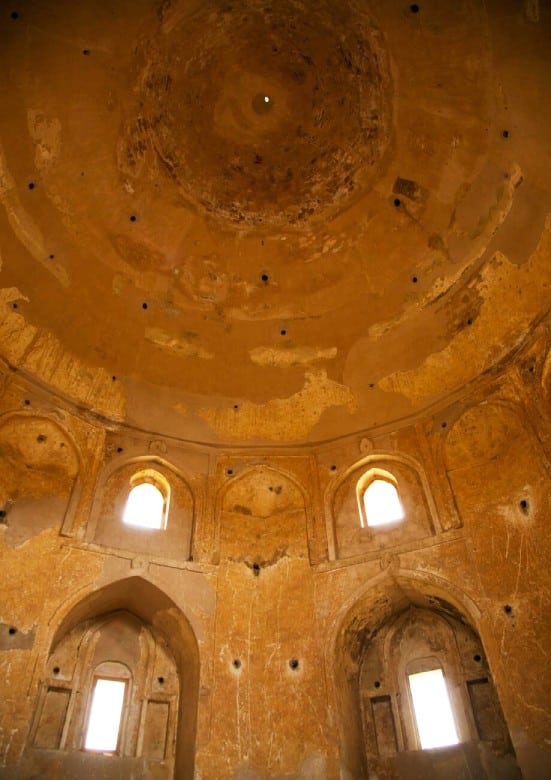
Upon entering Kerman city, ask locals about the Jabalieh Dome, and you’ll be guided with enthusiasm. It’s a primary destination for tourists visiting Kerman. The exact construction date of the dome is unknown, but its structure suggests a late Sassanian origin, possibly restored in the early Islamic period or inspired by Sassanian architecture.
Despite extensive research by archaeologists, the true history of the Jabalieh Dome remains elusive, leading to various theories about its origins.
Some believe it was a fire temple, but its architecture contradicts this theory. Others suggest it was the tomb of a Zoroastrian figure from the late Sassanian era.
A popular belief, based on its nickname “Gabr Dome,” hints at a pre-Islamic era origin. Officially registered as a national heritage site in 1937, it underwent restoration in 2004, transforming into the Jabalieh Treasury, housing historical inscriptions.
An English geographer and author described the Jabalieh Dome:
“As you pass the cemetery, you’ll see an octagonal stone building with a double-helix dome, each side measuring 18 feet, with a brick pinnacle and a circular apex. Known as Jabalieh, it’s the only stone structure in Kerman.”
Architecture of Jabalieh Dome in Kerman Province
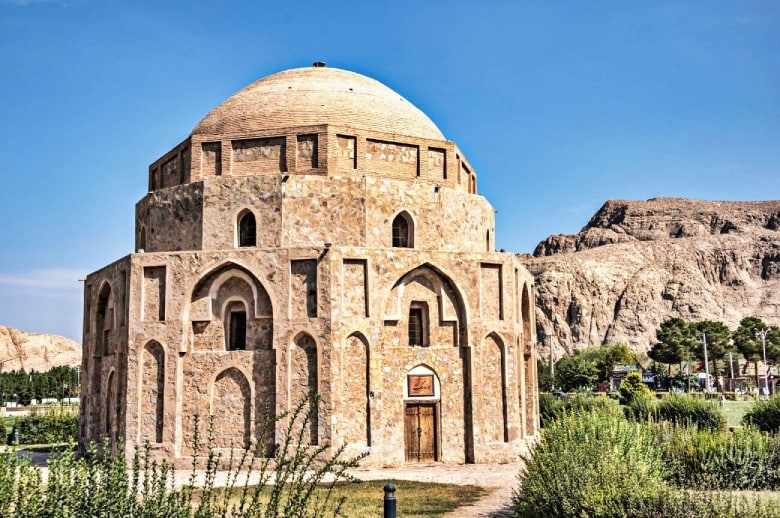
This historical structure is an octagon made primarily of stone. Each side has eight two-meter-wide doors, with seven currently sealed for structural integrity, leaving one open for entrance. The dome’s ceiling is brick, adorned with beautiful plasterwork. The walls are made of rubble stone with gypsum mortar outside and lime inside. An interesting aspect of its construction is the alleged use of camel milk, though some experts dispute this.
Inscriptions Discovered in the Jabalieh Treasury
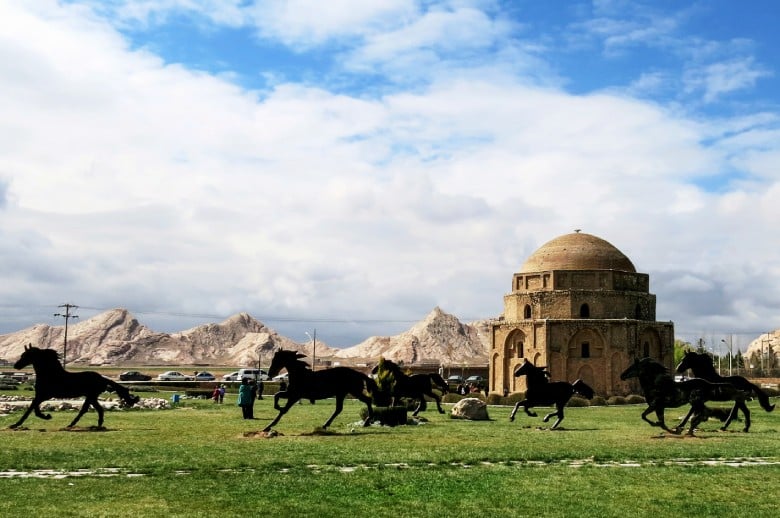
Inside the dome lies a valuable inscription, the “Ashkan Abder Mosque Inscription,” etched in Kufic script on a natural stone. It commemorates a mosque on the heights of Baft County.
Another historical piece, discovered in 1998 by Ahmad Ilaqi, was handed over to the Kerman Cultural Heritage Organization. This tombstone, measuring approximately 26×22 cm, features an inscription divided into a border and central text, framed within a rectangle. The border inscription includes verses from the Quran’s Al-Imran surah.
The dome houses over 120 carved stones from various historical periods, including a thousand-year-old stone from Rabor, a Seljuk-era tombstone of Khwaja Atabak, a stone belonging to Mirza Agha Khan, son of Mirza Ahmad Ali Khan, historian of Kerman, and several stone endowment plaques.
Accessing Jabalieh Dome in Kerman Province
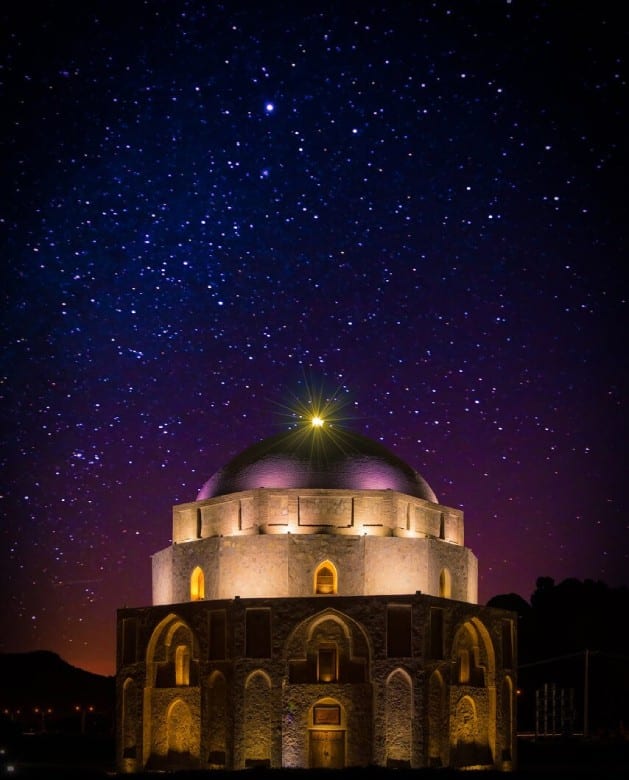
Address: Kerman Province, Kerman City, Shahid Boulevard
To visit the Jabalieh Dome, head towards the Saheb Al Zaman mountains and Zarisf Street in eastern Kerman. The exterior is accessible anytime, as it’s unenclosed. However, to explore the interior, plan your visit on non-holiday days.
BOOK ONLINE
Kerman Hotels
Nearby Attractions to Jabalieh Dome in Kerman Province
Ibrahim Khan Complex
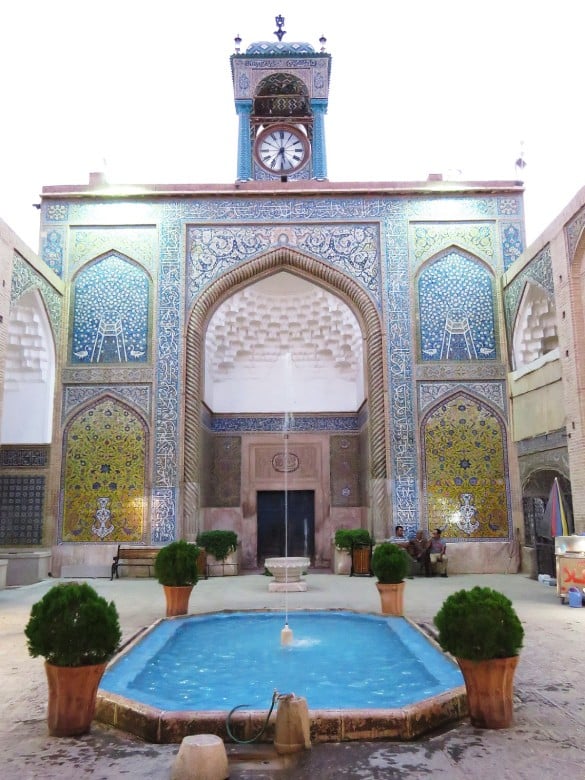
The Ibrahim Khan Complex in Kerman is a beautiful historical ensemble from the Qajar era, comprising a market, bathhouse, water reservoir, school, and more. Its architecture largely reflects the Safavid style.
Address: Kerman Province, Kerman City, Shahid Tejlayi Street, next to the Ganjali Khan Complex
Qaleh Dokhtar (Dokhtar Castle), Kerman
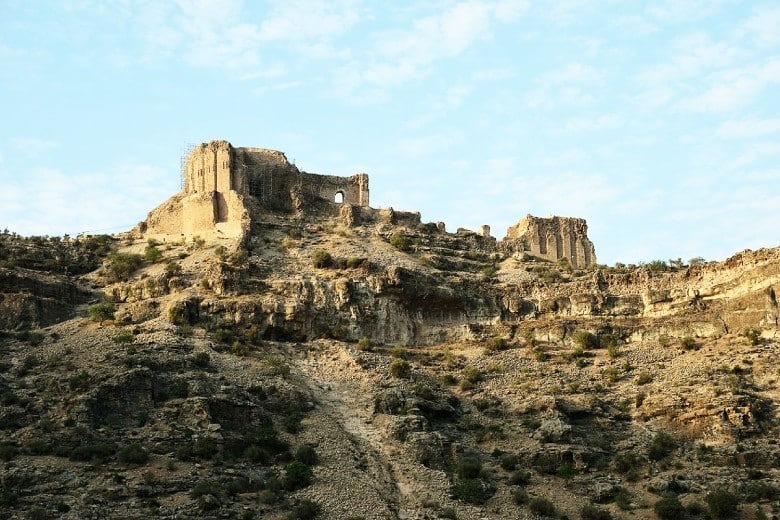
Kerman’s Girl Castle, also known as the Anahita Fire Temple, is one of the city’s oldest castles. Located on a 400-meter-high rocky outcrop with a 20-hectare surface area, its history dates back to pre-Islamic times.
Address: Kerman Province, Kerman City, Enghelab Street, near Enghelab Jungle Park
Ardeshir Castle, Kerman
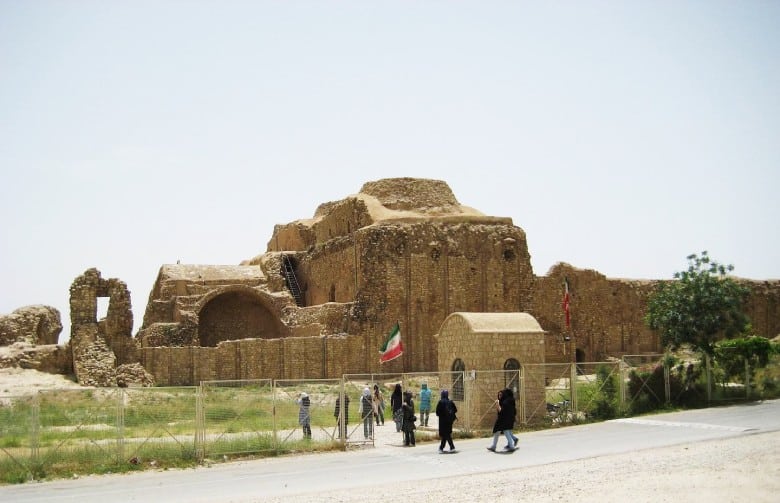
Ardeshir Castle, another historical relic in Kerman, is situated on a hill in the city’s eastern part. This pre-Islamic structure now stands in ruins, elevated 150 meters above Kerman.
Address: Kerman Province, Kerman City, Enghelab Street, near Enghelab Jungle Park
Discover the historical wonders of Kerman Province with insightful tours and travel guides from SURFIRAN.



